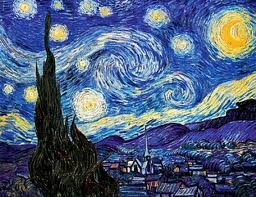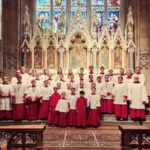And when Jesus had finished these parables, he went away from there, and coming to his hometown he taught them in their synagogue, so that they were astonished, and said, “Where did this man get this wisdom and these mighty works? Is not this the carpenter’s son? Is not his mother called Mary? And are not his brothers James and Joseph and Simon and Judas? And are not all his sisters with us? Where then did this man get all these things?” And they took offense at him. But Jesus said to them, “A prophet is not without honor except in his hometown and in his own household.” And he did not do many mighty works there, because of their unbelief.
Familiarity breeds contempt: a saying that seems to apply easily to this story of Jesus’ encounter with his hometown family and friends. Throughout this Gospel, Matthew paints a picture, rich with reference to the Hebrew Scriptures. The first century audience for whom he intended his account would have appreciated the allusions and echoes of texts they knew by heart, in a sophisticated and nuanced way. These verses are no exception.
One source of textual resonance can be found in the book of Genesis. In chapter 37, we learn that the young Joseph has prophetic tendencies. His family, however, is not amused:
Then he dreamed another dream and told it to his brothers and said, “Behold, I have dreamed another dream. Behold, the sun, the moon, and eleven stars were bowing down to me.” But when he told it to his father and to his brothers, his father rebuked him and said to him, “What is this dream that you have dreamed? Shall I and your mother and your brothers indeed come to bow ourselves to the ground before you?” And his brothers were jealous of him.
As is so often the case, the Bible confirms what we already know. In a pattern that seems to repeat itself throughout history, visionaries are cast out. This can be as true for the worlds of philosophy and religion as for the spheres of science, music and art.
Nineteen hundred years after the controversies created by the carpenter’s son, an altogether different young man created more than two thousand artworks. Only ever selling one painting during his short life, his work was ultimately destined to have a profound influence on Western art. One of his most famous works, The Starry Night is on display at the Museum of Modern Art.
In this iconic painting, Van Gogh depicts a wild sky, almost untamable. Heaven and earth shimmer and reverberate, casting the eye to and fro in a frantic search for the source of resonance. We are captivated by the vision of an incarcerated visionary, who, from the window of his sanitarium, depicts eleven stars, the same constellation dreamed by the outcast stargazer of Genesis. We become lost in the wonder of an eternal mystery, cast adrift in time and space.
Then, suddenly, we see it. The anchor at the center, piercing the heavenly realm, yet firmly rooted in the ground. With its spire reaching up into the night sky, we see the church, the hands and feet of that first century outcast: Jesus. In eloquence beyond words, this humble building delivers a sermon, speaking clearly about a mission of presence, and of prophecy.
Presence and prophecy: two aspects of Jesus’ ministry that his friends and family found hard to accept. Presence and prophecy: words for us, as we embark on the next phase of a capital restoration of our campus. As we update our facilities for the use of others, let us become Christ-like in our mission of presence. As we work to improve our church buildings for worship and teaching, let us become part of a mission of prophecy, pointing always to the Glory of God.
And, together with dreamers, prophets and outcasts everywhere, let us invite the Holy Spirit to dazzle us with vision as perfectly clear as Vincent’s night sky. Once that happens, the only option will be to astound the whole world with wisdom and mighty works.
Lent 2014



